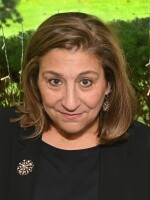With federal funding more at risk than ever for Manhattan’s National Bio and Agro-Defense Facility, Kansas Governor Sam Brownback recently said the state could expect what he called “a fight” for the next five years.
The state has promised more than $200 million in direct payments and in-kind supports for the lab - and has already spent almost a third of that on the site.
It’s been more than three years since the Department of Homeland Security awarded The National Bio and Agro-Defense Facility, or NBAF, to Manhattan, yet the animal disease facility still seems as foreign and exotic to many Kansans as the Nipah and Hendra viruses it will research.
Tim Barr, NBAF construction site manager, recently walked me around what’s still a massive, muddy hole surrounded by piles of gravel.
And it’s going to stay that way, at least for now. Congress has put funding on hold until it sees what a committee from the National Academy of Sciences says about the lab’s security. At the same time, the opposition to the project is growing.
Timeline: A History of NBAF
Kansans are already out of pocket for a bunch of NBAF-related costs.
The state donated 48 acres to DHS, worth over a million dollars, and authorized $105 million in revenue bonds for preparing the site. About a third of that has already been spent for specialized utilities.
And Manhattan, says the president and CEO of the city's chamber of commerce, Lyle Butler, has thrown $5 million into the pot, enticed by the NBAF’s economic development potential. A study commissioned by Kansas State University estimated an economic impact on the state of some $2.5 billion, including more than 750 construction jobs and 320 permanent workers. Butler says NBAF could change Manhattan forever.
"It could become the CDC. As Atlanta is for human health, Manhattan could be recognized for its major research in animal diseases," he said.
The university says some of that research is already happening at the Biosecurity Research Center in Pat Roberts Hall, which literally sits in the shadow of the NBAF construction site.
The BRC cost Kansas about $58 million dollars to build, and the state has invested many more millions to support NBAF-related research there.
Those funds came through the Kansas Bioscience Authority. It’s a public-private partnership the state legislature created to bring bioscience industry to Kansas.
Early on, NBAF was a priority for the authority, says former board chair and former Governor, John Carlin.
"Working closely with Homeland Security and the Kansas Congressional delegation, those were resources over a number of years that the authority put to win the award," Carlin said.
But the Kansas Bioscience Authority came under harsh scrutiny last year. Expense reports revealed what some state lawmakers felt was excessive spending — much of it related to lobbying for NBAF.
The Johnson County District Attorney is currently reviewing a forensic audit to decide whether criminal charges are appropriate.
Finally, the Kansas Department of Commerce committed $2 million dollars early on to win NBAF, low-interest loans for site development and money for training a skilled workforce: $1,000 per each job created.
Last summer, Brownback gave Senator Pat Roberts - long the torch-bearer for NBAF in Washington - the pen he used to sign an executive order creating a steering committee on NBAF.
In explaining the need for the committee, the governor underscored the state’s commitment to NBAF but said federal funding would be a struggle.
"This is going to be tough. The budget environment in Washington is extraordinarily challenging," Brownback said. "We are putting our best team on the field."
That was before President Obama eliminated construction funds for NBAF in the 2013 budget.
Congressman Lynn Jenkins, whose 2nd District includes the facility, said the White House was misguided in steering money away from national security. NBAF, she said, falls squarely within Washington’s responsibility.
"It's the right thing to do. It's a priority of the federal government, and we're going to get it done," Jenkins said.
That’s what Kansas is banking on, too.
Manhattan won the NBAF largely because of a sweet package of incentives, including an offer to hand over the Biosecurity Research Institute lab to the Department of Homeland Security. DHS declined.
Now, as NBAF is on hold and construction at that hole in Manhattan has slowed to a crawl, the state’s investment appears increasingly at risk.
For more NBAF coverage, visit KCUR's Tracking NBAF page.



